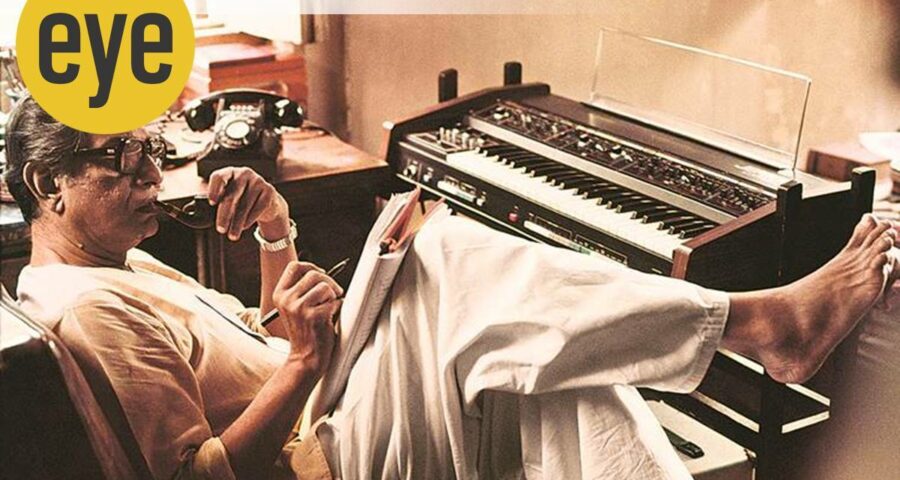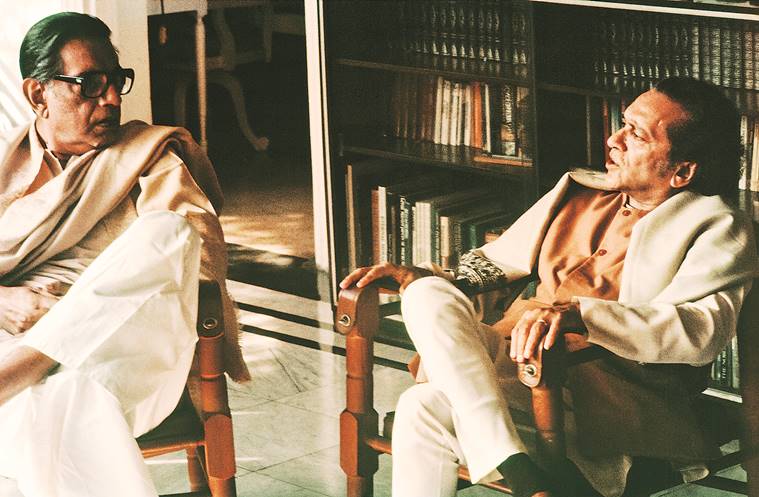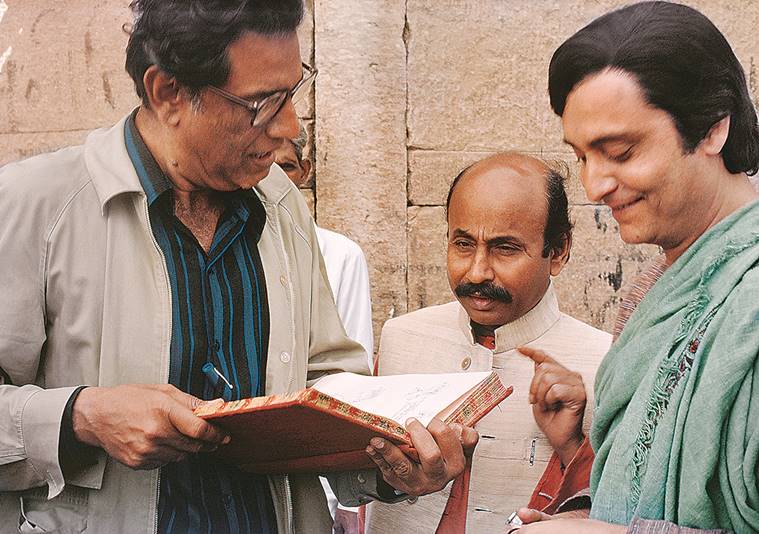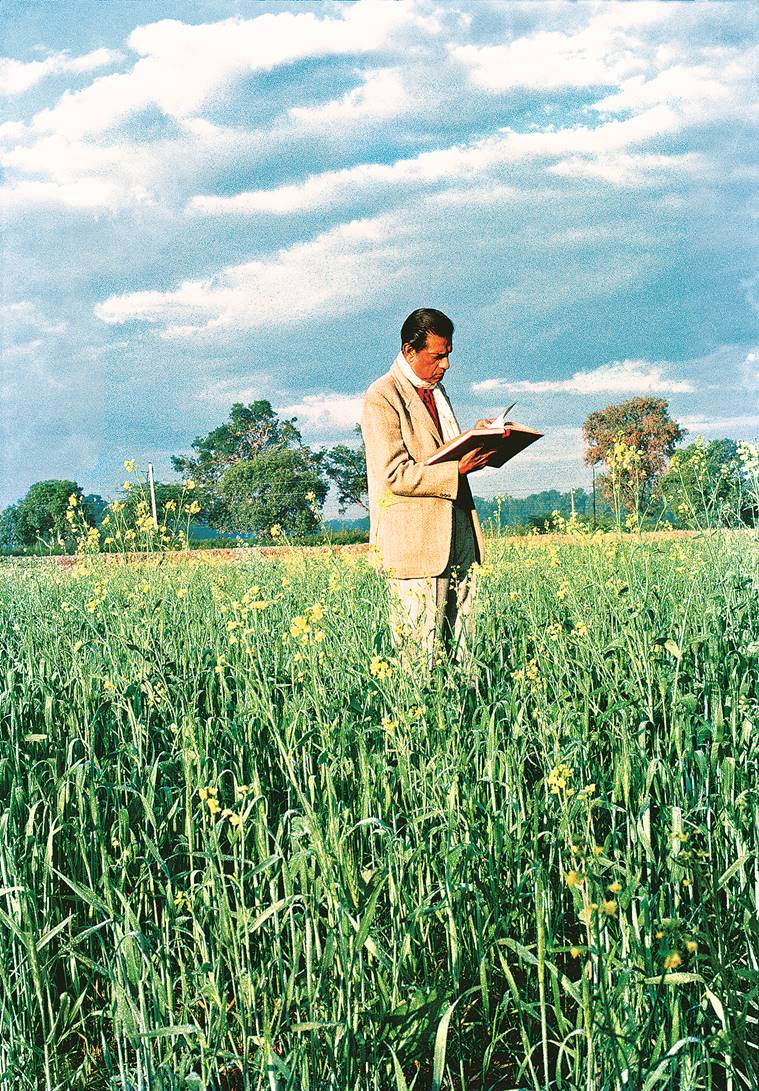The book Faces and Facets: Satyajit Ray in Colour, released last year, shows us the polymath and auteur through the eyes of his photo-biographer Nemai Ghosh, who died last year
Text by Andrew Robinson
“In a sense, the possibilities of fusing Indian and Western music began to interest me from Charulata (1964) on. I began to realise that, at some point, music is one … Especially for my contemporary films … I knew that raga music alone just would not do: because the average, educated middle-class Bengali may not be a sahib, but his consciousness is cosmopolitan, it is influenced by Western modes and trends. To reflect that musically you have to blend — do all kinds of experiments. Mix the sitar with the alto and the trumpet and so on.”
—Satyajit Ray
“I find I am inimical to the idea of making two similar films in succession… I do not know if this suggests a restlessness of mind, a lack of direction, resulting in a blurring of outlook—or if there is an underlying something which binds my disparate works together. All I know is that I am interested in many aspects of life, many periods in history, many styles and many genres of film-making.”
—Satyajit Ray
“I never imagined I would become a film director, in command of situations, actually guiding people to do things this way or that. No, I was very reticent and shy as a schoolboy and I think it persisted through college. Even the fact of having to accept a prize gave me goose-pimples. But from the time of Pather Panchali (1955), I realised that I had it in me to take control of situations and exert my personality over other people and so on — then it became a fairly quick process. Film after film, I got more and more confident.”
— Satyajit Ray
“Since it is the ultimate effect on the screen that matters, any method with an actor that helps to achieve the desired effect is valid … Sometimes it’s easier with non-professionals. I have no definite system. You have to modify your technique all of the time. But you have to get to know the person you are working with, know his methods and his abilities and his intelligence. Sometimes I use them as complete puppets, and I do not tell them anything about motivation at all. I just try to get particular effects.”
—Satyajit Ray
“When a writer is at a loss for words, he can turn to his Thesaurus; but there is no Thesaurus for the film-maker. He can fall back on clichés, of course — goodness knows how many films have used the snuffed-out candle to suggest death — but the really effective language is both fresh and vivid at the same time, and the search for it is an inexhaustible one.”
—Satyajit Ray
“This whole business of creation, of the ideas that come in a flash, cannot be explained by science. It cannot. I don’t know what can explain it but I know that the best ideas come at moments when you’re not even thinking of it. It’s a very private thing really.”
—Satyajit Ray
Source: Read Full Article









